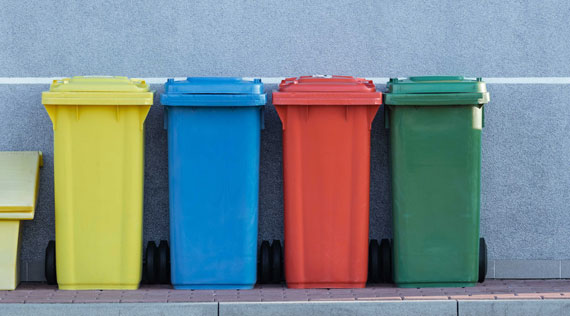Eastman, well-known for its “big circularity” and big impact savings with its Naia™ Renew spun fibers, recently announced it will invest up to $1 billion in a material-to-material molecular recycling facility in France. The initiative creates virgin-quality material with a significantly lower carbon footprint compared to heritage processes, and the investment would recycle enough plastic waste annually to fill France’s national football stadium 2.5 times over. In 2021, the company announced it would invest $250 million to build one of the largest material-to-material recycling facilities in the world in Kingsport, Tenn. (USA). The plant will be mechanically complete this year and operational in 2023.
The fashion industry’s huge waste problem knows no borders, and truly closing the loop on a global scale requires rethinking every aspect of the supply chain, particularly material selection.
The situation is urgent, as current recycled fibers account for just a small part of global fiber production and impact. A UBS report stated that roughly 100 billion pieces of clothing are made every year, of which more than 50 billion are incinerated or sent to landfill before ever being sold. By volume, the U.S. Environmental Protection Agency (EPA) estimates that, in 2017, 10.2 million tons of textiles ended up in landfills, while another 2.9 million tons were incinerated. Eastman is working toward a solution.
Molecular recycling: fashion’s building blocks
Unlike mechanical recycling, molecular recycling breaks down hard-to-recycle waste materials into molecular building blocks to be born anew.
“There are three principles in the textiles industry pertaining to circularity: extending the lifetime of textiles, design into circularity, and the use of safe and recycled materials. Through molecular recycling, we are helping to solve the global waste issue and reducing our carbon footprint,” said Claudia de Witte, sustainability leader for Naia™ at Eastman.
Eastman can also absorb a wide variety of waste materials from different industries to produce Naia™ Renew, including materials that have previously been very difficult to recycle using traditional mechanical techniques. Naia™ Renew uses a portfolio of pre- and post-consumer waste material, such as post-consumer carpet fiber, that would ordinarily end up in an incinerator or landfill. The selection of waste as feedstock is based on availability, proximity (lessening our environmental impact), and cost.
“The key difference between traditional mechanical recycling and molecular recycling is that we do not have any degradation or differences in key properties or performance capabilities, and we can also use hard-to-recycle waste materials,” de Witte said.
But brands shouldn’t look at molecular recycling vs. mechanical recycling as an either/or proposition. “Our technology does not compete with mechanical recycling, but is complementary to it,” de Witte said. “Molecular recycling targets waste streams that are unable to be recycled by conventional means and are otherwise destined for landfills, incineration or other negative end-of-life options.”
Eastman developed the patented carbon renewal technology (a type of material-to-material molecular recycling) that breaks down plastic waste feedstock to the molecular level before using it as building blocks to produce Naia™ Renew cellulosic fiber as staple fiber and filament yarn. This process enables plastic waste to be recycled an infinite number of times with zero degradation of quality, performance, or appearance—all key demands from today’s discerning consumer.
In 2020, Eastman debuted Naia™ Renew, its traceable cellulosic staple fiber that is ideal for loungewear and everyday casual wear. It is sourced from 60 percent wood pulp and 40 percent recycled waste materials. After its success, Eastman expanded the fiber’s usage to fashionable workwear, taking it from couch to conference room as more consumers returned to offices but still demanded comfort and ease. Versatile Naia™ staple fiber is perfect for a wide variety of womenswear fashion categories, from loungewear, T-shirts, comfy pants and jumpsuits to sweaters and dresses. Going a step further, Eastman expanded into the growing home and home textiles market, aiming to improve the quality of consumers’ sleep with Naia™ Renew bedding.
“One of the greatest strengths of Naia™ Renew is that it’s a truly circular solution available at scale,” said Dr. Dnyanada Satam, segment market manager for home textiles at Eastman. “It offers sustainability without compromising softness, long-lasting quality, and ease of care. Naia™ Renew checks all the boxes on performance as well as circularity.”
Concerned consumers care
The newest generation of consumers is most interested in and committed to recycling, and Eastman is focused on helping them—and the entire value chain—understand new, innovative recycling technologies.
Consumers are just as concerned about waste as they are about climate change and air and water quality. In fact, more than four in five U.S. and European consumers are concerned about ocean pollution (86 percent) and the increasing amount of waste that has to be landfilled or incinerated (81 percent), according to an Eastman study of 2,000 U.S. and European consumers aimed at helping Naia™ industry partners market molecular recycling to consumers.
Reaction has been positive. After being educated about molecular recycling, more than three in four U.S. and European consumers (76 percent) believe that it is a great step forward in helping to solve the global waste crisis. About seven in 10 say they feel good about molecular recycling and about brands using molecular recycling to make their products.
This indicates that those who are first to market offering solutions via molecular recycling have a major opportunity to drive purchase intent, brand equity, and consumer loyalty.

